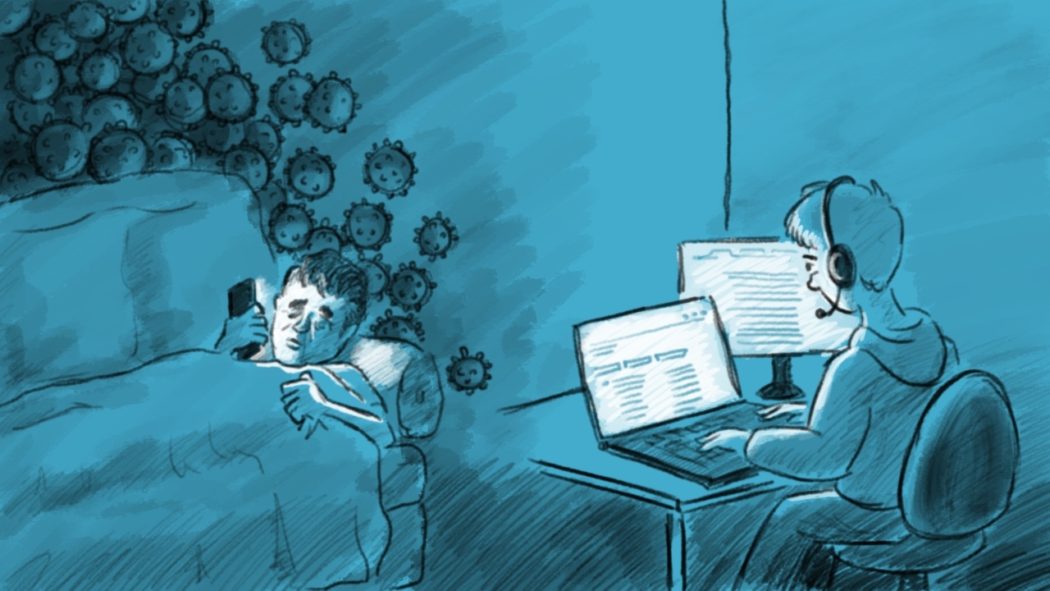Opinion: A day in the life: contact tracing
The following only represents the personal experiences, views, and opinions of the author. It does not represent an official statement nor recommendation by the Utah Department of Health (UDOH). Names mentioned are pseudonyms and some other details have been changed to protect confidentiality.
The first and last time I talked to Jorge, he was the 6th person in the queue of my COVID-19 contact tracing shift for the Utah Department of Health (UDOH). A few of the people before had been able to complete the interview, a few more would need another try tomorrow, and one had refused to talk any more at all. That much was typical and easy to handle within the rhythm of selecting a new case of COVID-19, checking their lab results, calling to ask about their symptoms and contacts, and finally recording all my notes on the computer with a few follow-up emails afterward.
Any given call usually lasts 20 minutes, and Jorge said it was a good time to talk. I could imagine his eyes squinting as we laughed about my rusty Spanish, maybe glinting in the last light of the Autumn sunset. He seemed to have an easy, patient personality and I was glad to work with him. As we continued talking, my own smile faded, and the situation shifted into something far more serious.
http://https://youtu.be/wFTUD9TPXts
My heart sank with every wheeze he took to maintain the conversation. I discovered that he had been lying on the couch for days, unable to walk around the house without a tight, painful chest siphoning his breath away. His cuñada (sister-in-law) had been fighting a mild fever last week before she tested positive. Jorge’s kids had convinced him to get tested once his own cough started.
That was three days ago, and it was only now that we had been able to reach him by phone. Bit by bit, the severity of his disease became clear, and so did the distance between him and the nearest hospital. I gave him all the information and encouragement I could and let him go to call the ER.
The next day when I logged on to follow up, a different phone number was listed. Jorge’s son answered and told me how he drove two hours to spend the night in the ER with his Dad. Jorge was in the ICU by the time I called, so I answered some questions for his son and thanked him for his efforts. After I hung up, I noted Jorge’s status and marked his investigation “complete.” The hospital would finish his contact tracing.
I will never know what happened to Jorge after that. Contact Tracers have access to the records of the people we are working with right then, but after that, we cannot look up records for any other reason. We cannot check up on people we care about or friends of friends—not even our own records.
Since I began working with the UDOH I am grateful that Jorge’s combination of symptoms and access to healthcare has been an exception. Most people we talk to fend off the infection with some aches and a low fever (if that), but then, that’s part of the problem. More often now than earlier in the year, people do not know how or when they got infected. The virus slinks silently, and at times I feel like we are chasing the shadow of a shadow.
The contact tracing team works by computer. We log into a secure network that encrypts every byte of information we view. The backbone of our actual contact tracing in Utah is a network called EpiTrax, part of our link to the larger National Electronic Disease Surveillance System (NEDDS). Our job is to boil down all the little details of how COVID-19 affects people into something we can record and learn from as the mountains of data continue to pile up.
We ask about the symptoms people feel to get a grasp on when they were most infectious and how long it may be until they can return to (a new) normal. Sometimes we can happily say that there is no need to worry about Uncle Billy’s BBQ last week; sometimes the list of people exposed to the virus gets a bit longer. It all depends, and it makes every mouse click seem a bit heavier.
We might be facing this pandemic in the Information Age now, but for coronavirus, it has always been the information age; a virus is genetic misinformation, prepackaged to rip apart any cell on its way to another one. This time we have ones, zeroes, and the ingenuity of the planet to tip the scale. I am glad for our successes, reverent for those we have lost along the way and looking forward to how we can all improve together.

Keith Wilson is a cartoonist for the Statesman. He is majoring in Biochemistry and enjoys puns, drawing, and big band swing dancing.
keith.wilson@usu.edu

